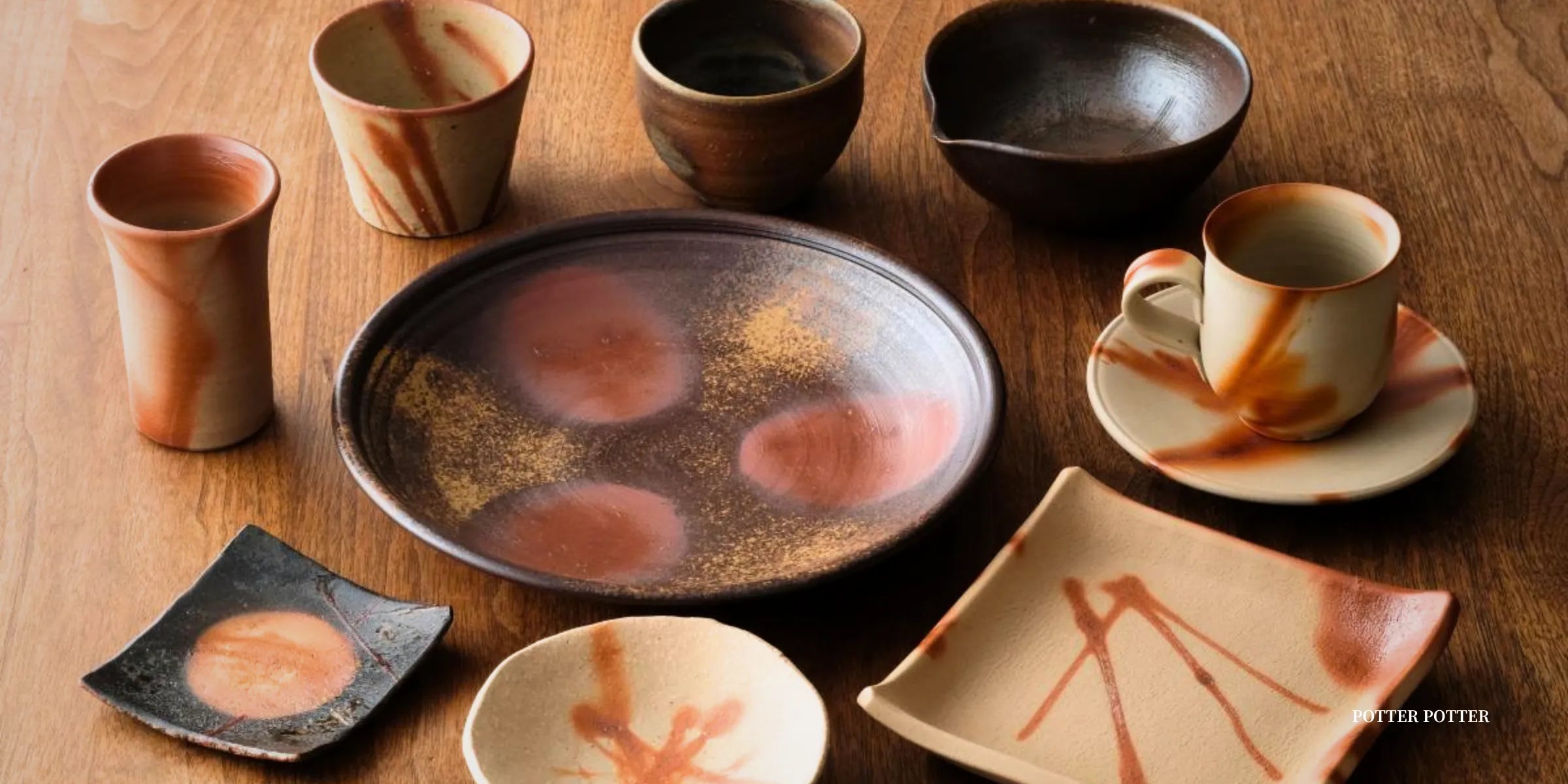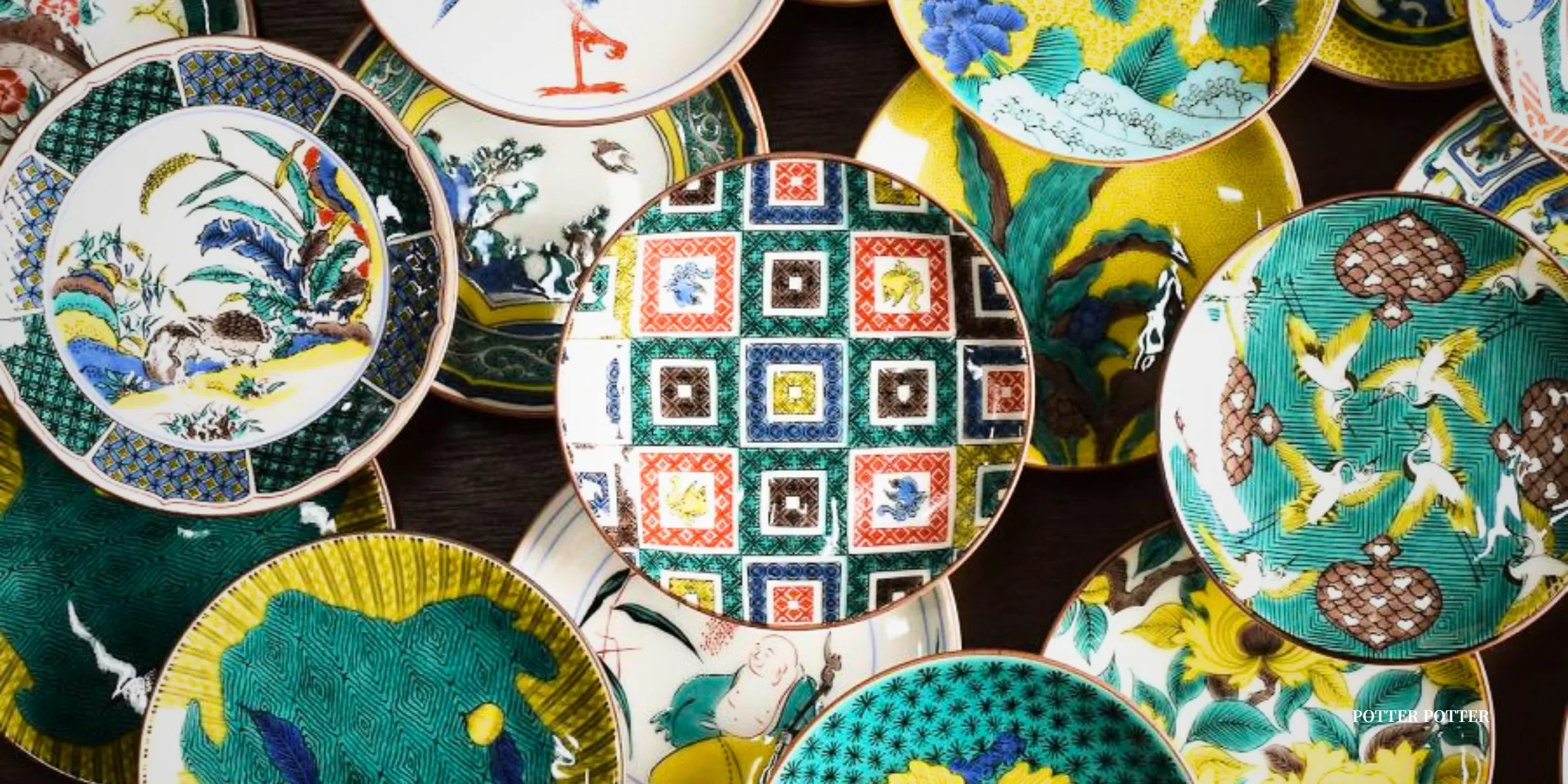
Bizen Ware: Art of High-Fire Unglazed Pottery in Okayama Prefecture
What makes simple, unglazed Japanese pottery so captivating? The answer lies in Bizen Ware, a traditional ceramic art from Okayama Prefecture. Renowned for its rustic beauty, durability, and timeless charm, Bizen Ware holds deep cultural significance, inspiring collectors and artisans with its centuries-old craftsmanship and natural elegance.

|
Table of Contents |
History of Bizen Ware
Bizen Ware (備前焼) is one of the oldest forms of Japanese pottery, with its roots tracing back over 1,000 years to the Heian period (794-1185). It is recognized as one of Japan’s Six Ancient Kilns, alongside Seto, Tokoname, Shigaraki, Tamba, and Echizen. These ancient kilns are celebrated for preserving traditional pottery techniques passed down through generations.
The birthplace of Bizen Ware is located in the town of Bizen, Okayama Prefecture, specifically in the Imbe area. Initially, Bizen Ware evolved from the production of sueki (須恵器), a type of ancient Japanese ceramic. During the Heian period, local artisans refined their skills and created the unglazed, high-fired pottery that we know today as Bizen Ware.
Unlike many other forms of pottery in Japan, Bizen Ware is notable for its simplicity and the absence of glaze. Instead, the unique reddish-brown color and texture are achieved through a firing process that requires careful control of heat and timing. By the Kamakura period (1185–1333), Bizen Ware became a popular choice for tea ceremonies, as its understated aesthetic resonated with the principles of wabi-sabi, which emphasizes beauty in imperfection.
The growth of tea culture during the Muromachi period (1336–1573) further cemented Bizen Ware’s place in Japanese society. Famous tea masters like Sen no Rikyu appreciated the rustic, unadorned qualities of Bizen pottery. As a result, Bizen Ware was favored for tea utensils, such as tea bowls and water jars, where the absence of ornamentation symbolized purity and simplicity.
During the Edo period (1603–1868), the art of Bizen Ware flourished under the patronage of the local lord, Ikeda Mitsumasa. He provided protection and encouragement to skilled potters, ensuring that the craft continued to thrive. The production of Bizen Ware expanded beyond tea utensils to include everyday objects such as sake bottles, flower vases, and storage jars.
Bizen Ware’s long history is a testament to its enduring appeal. In 1982, Bizen Ware was designated as an official Traditional Craft of Japan, and in 2017, it was recognized as part of Japan’s cultural heritage under the “Japan Heritage” program. Today, Bizen potters continue to honor ancient techniques while adapting to modern tastes, ensuring that this remarkable tradition remains vibrant and relevant.
Characteristics of Bizen Ware
One of the most striking features of Bizen Ware is its natural beauty, which is achieved without the use of glazes or decorative paints. Instead, the pottery’s aesthetic is shaped by the interaction of the raw clay, the firing process, and the kiln environment. This results in unique, unrepeatable patterns and textures that vary from piece to piece.
The clay used in Bizen Ware is locally sourced from the mountains around the Imbe area, known as hiyose clay. This clay is rich in iron and has a high plasticity, which allows artisans to mold it into various forms, from delicate tea bowls to robust storage jars. The iron content also plays a significant role in the color of the final product, which ranges from deep red to warm orange, brown, and even gray, depending on the firing technique.
The firing process for Bizen Ware is both lengthy and complex, often lasting up to two weeks in noborigama (climbing kilns). During this time, the pottery is exposed to extreme temperatures of over 1,200°C (2,192°F). As the flames lick the unglazed surfaces, the clay undergoes a transformation known as yakishime, where the material hardens and tightens, giving Bizen Ware its characteristic strength and resilience.
Another hallmark of Bizen Ware is its unique surface effects, known as kōhen (窯変), or “kiln transformations.” These natural, random patterns are the result of various factors, including the placement of the pottery in the kiln, the type of fuel used (often pine wood), and the introduction of straw or ash during the firing process. Some of the most well-known kiln effects include:
-
Sangiri (桟切り)
A technique where parts of the pottery are buried in ash or protected from direct flames, resulting in gray or bluish hues on the surface. -
Hidasuki (緋襷)
The use of rice straw wrapped around the pottery before firing creates a striking reddish pattern. The straw burns away, leaving behind vivid lines that contrast with the natural clay. -
Goma (胡麻)
The natural ash from the kiln settles on the pottery, melting into a glossy finish that resembles sesame seeds scattered across the surface. -
Botamochi (牡丹餅)
Circular patterns formed by placing large clumps of straw or wood on the surface of the pottery, resulting in warm reddish spots.
The tactile quality of Bizen Ware is also a key aspect of its appeal. The unglazed surface has a subtle roughness, with small bumps and ridges that give it a handmade, organic feel. As a result, Bizen Ware is often described as “coming alive” with use. Over time, as it is handled and exposed to different temperatures and liquids, the surface of Bizen Ware becomes smoother, acquiring a patina that enhances its natural beauty.
In terms of functionality, Bizen Ware’s dense, high-fired body makes it exceptionally durable and resistant to breakage. This is why it has earned a reputation for being “unbreakable,” with stories of Bizen pottery surviving falls or rough handling. Additionally, the fine pores in the clay provide insulation, making Bizen Ware ideal for both hot and cold beverages. Tea stays warm for longer, and sake or beer poured into a Bizen cup retains its freshness and flavor.
Global Influence of Bizen Ware
Although Bizen Ware is a distinctly Japanese craft, its influence has spread far beyond Japan’s borders. In recent decades, international collectors, scholars, and ceramic artists have shown a growing interest in this ancient pottery tradition, drawn to its unique aesthetic and historical significance.
Bizen Ware’s appeal to global audiences can be attributed to its timeless design and natural beauty. Its organic appearance, with patterns and textures formed by the elements during firing, resonates with contemporary art movements that emphasize simplicity, natural materials, and handcrafted quality. The philosophy of wabi-sabi—finding beauty in imperfection—has also gained recognition worldwide, with Bizen Ware serving as an embodiment of this concept.
In the realm of modern ceramics, Bizen Ware has inspired many potters and artists from around the world to explore unglazed pottery techniques and the creative potential of firing processes. Workshops and exhibitions showcasing Bizen Ware are held internationally, and many foreign artisans travel to Japan to learn from traditional Bizen potters. These exchanges have helped to promote the craft globally, ensuring its continued evolution and relevance in the modern world.
Bizen Ware has also been featured in prestigious museums and galleries around the world, from the Metropolitan Museum of Art in New York to the British Museum in London. This international recognition has helped elevate Bizen Ware from a regional craft to a respected art form with global appeal.
Furthermore, as Japanese culture and aesthetics have become increasingly popular in the West, Bizen Ware has found a place in contemporary interior design. The simple yet sophisticated look of Bizen pottery complements minimalist and rustic design trends, making it a favorite choice for homes, restaurants, and tea houses around the world.
The End.
Bizen Ware, with its roots in ancient Japan, is a craft that has withstood the test of time. Its unique combination of simplicity, strength, and beauty continues to capture the hearts of people around the world. Whether used as a functional object or displayed as a piece of art, Bizen Ware carries with it a sense of history and craftsmanship that is hard to find elsewhere.
For those who appreciate traditional Japanese arts or are looking for a deeper connection to nature through handcrafted pottery, Bizen Ware is an ideal choice. The unpredictability of its kiln-fired patterns ensures that no two pieces are ever alike, offering a one-of-a-kind addition to any collection. Explore the timeless charm of Bizen Ware and discover the beauty that lies in its earthy elegance.

